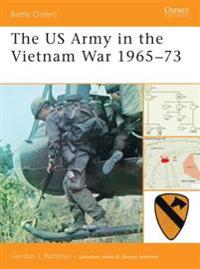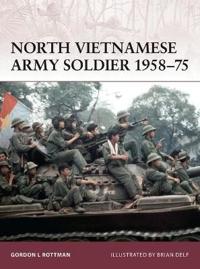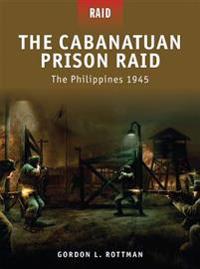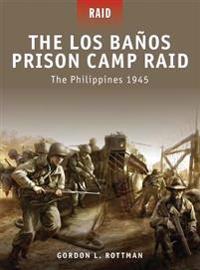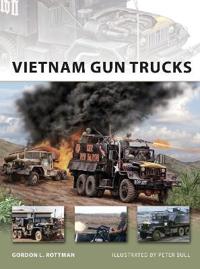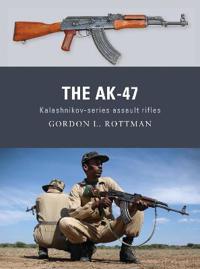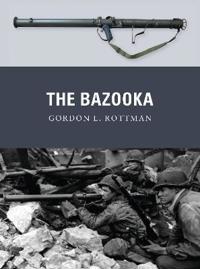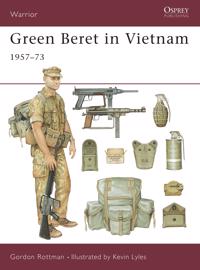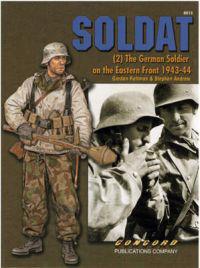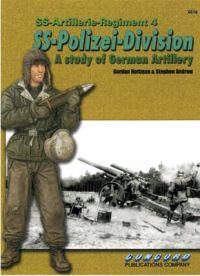Viet Cong and Nva Tunnels and Fortifications of the Vietnam War (Häftad)
avGordon L. Rottman
ISBN: 9781846030031 - UTGIVEN: 200608During the Vietnam War, the Viet Cong (VC) main forces and North Vietnamese Army (NVA) were forced to hide weapons and supplies underground and to dig protective shelters to counter massive US firepower. Their field works defended villages, hidden base camps, and fortified complexes, and took the fo[...]
Soviet Field Fortifications 1941-45 (Häftad)
avGordon L. Rottman
ISBN: 9781846031168 - UTGIVEN: 200704From June 1941, the Soviets were forced to undertake large-scale defensive operations in the face of the overwhelming German blitzkrieg assault, operations which ran counter to their preference for highly mobile, offensive warfare. Lessons were quickly learned across a wide variety of terrain and cl[...]
Viet Cong Fighter (Häftad)
avGordon L. Rottman
ISBN: 9781846031267 - UTGIVEN: 200705An enemy in the shadows, the Viet Cong was the military arm of the National Liberation Front, the Communist Party of the Republic of Vietnam. Often working with the North Vietnamese Army, they were a constant factor amid the rice paddies and battlefields throughout the war. Despite fighting an enemy[...]
Vietnam Airmobile Warfare Tactics (Häftad)
avGordon L. Rottman
ISBN: 9781846031366 - UTGIVEN: 200703With its first major use in battle during the Vietnam War, the helicopter ushered in a radically different way of fighting, despite its proven vulnerability to ground fire. Either delivering troops into hostile territory and removing them after the fighting ended, or armed with guns, grenade launche[...]
The US Army in the Vietnam War 1965-73 (Pocket)
avGordon L. Rottman
ISBN: 9781846032394 - UTGIVEN: 200804This book provides detailed information about how US Army units were organized and operated in America's longest war. Special forces veteran Gordon L Rottman examines the different types of infantry battalions and the units that supported them, their training and organization down to platoon level. [...]
North Vietnamese Army Soldier 1958-75 (Pocket)
avGordon L. Rottman
ISBN: 9781846033711 - UTGIVEN: 200902Commonly mistaken for the locally raised Viet Cong, the NVA was an entirely different force, conducting large-scale operations in a conventional war. Despite limited armour, artillery and air support, the NVA were an extremely politicized and professional force with strict control measures and leade[...]
The Cabanatuan Prison Raid (Pocket)
avGordon L. Rottman
ISBN: 9781846033995 - UTGIVEN: 2009-10On 27 January 1945 the 6th Ranger Battalion and the 6th Army Special Reconnaissance Unit (the Alamo Scouts) began the most dangerous and important mission of their careers to rescue 500 American, British and Dutch prisoners-of-war held at a camp near Cabanatuan. This daring plan was fraught with dif[...]
World War II Axis Booby Traps and Sabotage Tactics (Häftad)
avGordon L. Rottman
ISBN: 9781846034503 - UTGIVEN: 200904Booby traps laid by troops in war zones in World War II are largely neglected in histories and memoirs, and rarely examined in detail. Yet for a soldier, the threat of booby traps was hugely significant and the ability to find and disarm them was essential. This is the first comprehensive study of W[...]
The Los Banos Prison Camp Raid (Pocket)
avGordon L. Rottman
ISBN: 9781849080750 - UTGIVEN: 2010-09On the southwest shore of Laguna de Bay in the Philippines stood the Los Banos Internment Camp. Held within were 2,147 starving POWs, surrounded by thousands of Japanese troops. As the desperate battle for Manila raged, only 130 Paratroopers could be spared for the rescue operation. Supported by Ala[...]
The Rocket Propelled Grenade (Pocket)
avGordon L. Rottman
ISBN: 9781849081535 - UTGIVEN: 201009The RPG-series of weapons is the most widely used family of lightweight antitank weapons in the world today. RPGs have been used not only against their intended targets, but against personnel, fortifications, buildings, soft-skin vehicles, watercraft, and aircraft. Lightweight, relatively compact, e[...]
Vietnam Gun Trucks (Häftad)
avGordon L. Rottman
ISBN: 9781849083553 - UTGIVEN: 201109"Vietnam Gun Trucks".
The AK-47 (Pocket)
avGordon L. Rottman, Johnny Shumate, Alan Gilliland
ISBN: 9781849084611 - UTGIVEN: 201104The Kalashnikov AK-47 is the most ubiquitous assault rifle in the world, with more AK-47s and its variants in use than any other individual small arm. Created by Senior Sergeant Mikhail Kalashnikov, and first adopted by the USSR soon after World War II, its production continues to this day, with an [...]
Tunnel Rat in Vietnam (Häftad)
avGordon L. Rottman
ISBN: 9781849087834 - UTGIVEN: 201202"Tunnel Rat in Vietnam".
The Bazooka (Häftad)
avGordon L. Rottman
ISBN: 9781849088015 - UTGIVEN: 201206Most belligerents entering World War II armed their infantry with bulky and ineffectual anti-tank rifles as their primary means of combating tanks. US planners realized that what infantrymen needed was a relatively lightweight, man-portable anti-tank weapon that was simple to operate, accurate, and [...]
Green Beret in Vietnam (Häftad)
avGordon L. Rottman
ISBN: 9781855325685 - UTGIVEN: 200207Vietnam was the US Special Forces' most complex and controversial mission, one that began in 1957 and ended in 1973. Camp strike forces, mobile strike forces, mobile guerrilla forces, special reconnaissance projects, training missions and headquarters duty provided vastly differing experiences and c[...]





